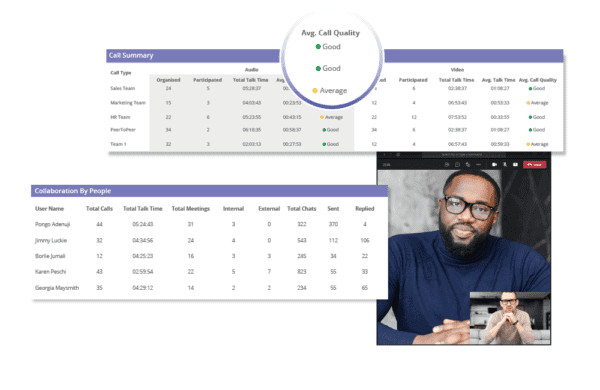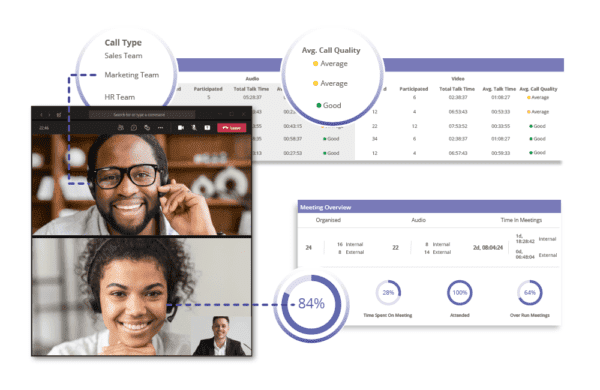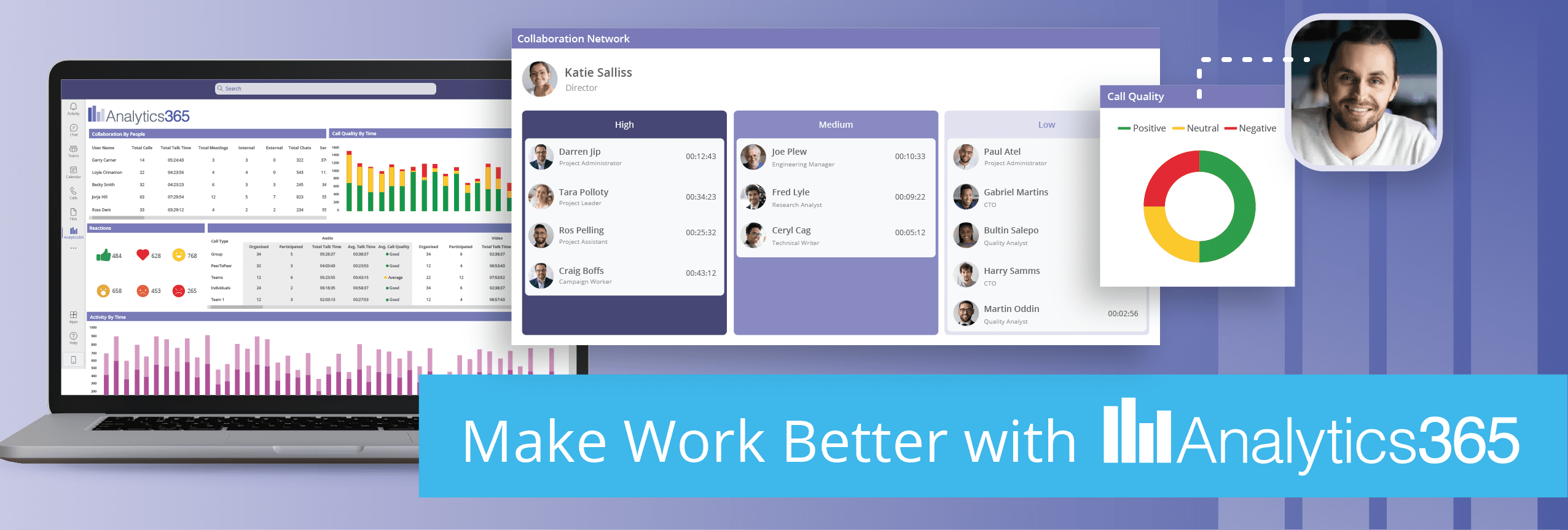Only 7% of employees have continuous performance management.
Think about that, 7 out of 100 people have any form of continuous performance management in their current role. This probably means that there are a lot of managers out there who probably aren’t monitoring their team’s performance.
And that study is not looking at remote teams specifically. Remote teams where you typically have less contact time and the comfort of seeing someone hunched over their screen.
With it estimated that by 2025 at least 70% of the workforce will be working from home 5 days a month, it’s going to be critical for managers to find ways to monitor their teams performance remotely.
In this post, we’re going to cover some of the ways that you can monitor, evaluate and manage your remote team’s performance.
What Is Performance Management

Performance management is where a manager tracks and evaluates the performance of an employee, providing constructive feedback to help them achieve their goals.
Managers should use performance management to do two things:
- Assess the performance of the individual employee
- Create processes and goals which help to achieve the goals of the business.
There should be a focus on nourishing and supporting employee development while ensuring their goals align with the objectives of the business.
Businesses can implement different activities such as weekly one-to-ones and quarterly or annual reviews to evaluate their employees. These meetings will aim to discover:
- Employee efficiency
- Employee goals
- Training needs
- Measuring the success of training programs
- Offering recognition
- Employee motivation
Why Is Monitoring Performance Important
Monitoring employee performance is an essential practice for any organisation as it helps to bring together employees, resources and objectives under one umbrella and ensure everyone is aligned and working together effectively.
Without performance management, employees can lose sight of their goals, be left rudderless, and their overall performance may decline.
When you monitor and manage your employee performance, it’s important to remember two things:
Monitoring means supervision, not surveillance
There is a difference between supervision and surveillance, and it’s important for businesses not to be too overbearing on their staff.
Our post is a useful guide for understanding how it should be done and the dos and don’ts for remote monitoring.
No one likes a micromanager
Our post on how not to be a micromanager is another useful guide for learning how to monitor your employee’s performance while still letting them be independent with their work. It is an important skill to understand and will also help establish good relationships and trust with your employees.
What are the key pillars of performance management?
Any performance management strategy should contain 4 key stages:
- Planning
- Monitoring
- Developing
- Rewarding
1. Planning
During the planning stage, you are looking to set objectives and define the goals you want to achieve.
This can be done for an individual or the whole team, depending on the set goals.
You can also use the planning stage to set expectations, such as timelines and the key performance indicators (KPIs) you will use to represent goal achievements.
2. Monitoring
This is a process where the employee and the manager should be involved.
This is the opportunity for managers to schedule regular check-ins in order to assess performance progress and offer additional support if needed.
This is also the chance for employees to offer feedback to managers on performance which can be monitored and updated before the main review.
3. Developing
This stage may vary depending on performance.
It is an opportunity for managers to create action plans that either develop their employees further or provide them with more help and support.
If an employee is struggling, then the developing process aims to help the individual before any drastic steps need to be made, such as termination.
4. Rewarding
This is an important stage and can be very helpful for boosting employee retention.
Rewards help employees to remain motivated and keep their performance to a high standard – this also helps others around them to be incentivised to work harder if they have not been rewarded.
The reward process should be established early on so that employees have a clear vision of what they are working towards and what they can achieve for themselves. It is then more important for managers to follow through with those rewards when they are earned.
Our Tips For Monitoring The Performance Of Your Remote Team
Set clear targets for each team member
Without a clear idea of what they are working towards, how can employees know what is expected of them?
Targets are important for setting expectations and can provide managers with a benchmark for key performance indicators (KPIs) for both individuals and teams.
Giving employees and teams a target to work towards means they are more likely to be motivated and engaged with work which helps facilitate reaching their goals.
Set up regular check-ins
Annual or quarterly reviews are a great way to measure overall employee performance, but it is also important to schedule more regular check-ins such as 1-2-1s. This is especially important when employees are working remotely.
Regular 1-2-1s are a great way to monitor employee performance, workload and well-being in an informal, relaxed setting whilst also giving employees the opportunity to communicate freely.
If symptoms such as burnout are missed, this can have a huge impact on performance; therefore, 1-2-1s should be a top priority for every manager to ensure their teams are able to work to their fullest potential.
If your team uses Microsoft Teams, then you can also use Analytics 365’s chat sentiment dashboard to track employee well-being.
Set clear, understandable KPIs
If you know what you’re looking for, performance is easier to track and monitor.
Having a clear idea of what performance indicators are required to validate good performance means that monitoring performance is easier, and it is then easier to set targets in relation to those KPIs.
Examples of KPIs include:
- Revenue growth
- Client acquisition growth
- Profit margins
- Customer satisfaction
Understand successful habits
Knowing what teams are working effectively is just as important as how they work effectively.
Understanding successful habits can be a useful tool for planning and monitoring remote performance. If you know the habits that are proving successful, then you can aim to replicate them across the team and further boost performance.

With Analytics 365, you can access Microsoft Teams call and chat analytics dashboards. These dashboards give you insights into what habits your successful employees are implementing when using Microsoft Teams. This offers you further insights into how to replicate these habits across the rest of your business.
Use project management software
Using project management software is an easy way to track and monitor the work that is being carried out by your team and the wider business.
They can be especially helpful for remote teams as everyone can access the projects in one place and keep up-to-date on the progress being made or tasks that need to be completed within the project.
It is an efficient way to regularly see how projects are performing and can highlight any immediate red flags that need to be dealt with.
Encourage feedback (upwards and downward)
Feedback is crucial for making changes within a business.
Feedback can come from an individual or a team, but either way, it pays to ensure you have a means of receiving and giving feedback in order to actively improve performance based on the feedback provided internally.

Using our engagement metrics, you can understand how engaged your employees are and provide you with feedback on their Microsoft Teams usage, which can then be used in reports to identify pain points.
Monitor individual employee workload
Managing employee workload is vital to ensuring that they aren’t being overloaded and can work effectively. It also ensures they can complete any training that is required.
If their workload becomes too much, they may struggle to fit everything into their day. This leads employees to work out of hours and burn out, making them frustrated and potentially leaving the business.

With Analytics 365, you can monitor your employee’s Microsoft Teams usage to ensure they work within their agreed office hours and aren’t burning out.
Set clear training plans
Setting clear training plans gives remote employees structure and motivation to reach the goals set out in the performance review.
This is even more important when working from home. Giving your employees a clear training plan will help them to plan around their workload, avoiding any unwanted stress.
It is also important to supervise your team while training remotely. Luckily, we have a post that breaks down how to effectively supervise remote employee training.
Incentivise good performance
It pays to reward good performance.
Offering incentives for good performance is not only good for employee motivation but encourages them to perform to a higher standard.
Rewards also make employees feel appreciated for their hard work and not only helps to keep performance consistent but improve employee retention and loyalty – which is a win-win!
Some incentives might include,
- Vouchers
- Work benefits
- Fun gifts
- Monetary incentives
- And recognition awards
Summary
Performance management is a crucial element of managing any team and can directly impact the efficiency and success of the team, so should be done regularly.
This is even more important for remote teams.
Any performance management strategy should contain 4 key stages:
- Planning
- Monitoring
- Developing
- Rewarding
It is important to know what your KPIs are so that you can monitor performance effectively. What you choose to monitor will affect how you see the performance of the business and the targets you set.
In order to achieve your targets, there are certain practices which can help to manage performance throughout.
Some of which may include how you approach and support the performance of your employees and few ways to do this are,
- Set up regular 1-2-1s
- Set clear targets for individual employees
- Make notes of successful habits across teams
- Offer clear training plans for improving employee performance
- Make sure to incentives good performance
Analytics 365 has even more tools for managers to use to track and monitor the performance of their remote employees.
You can find out even more about how our tools can help you and your team’s performance here.







